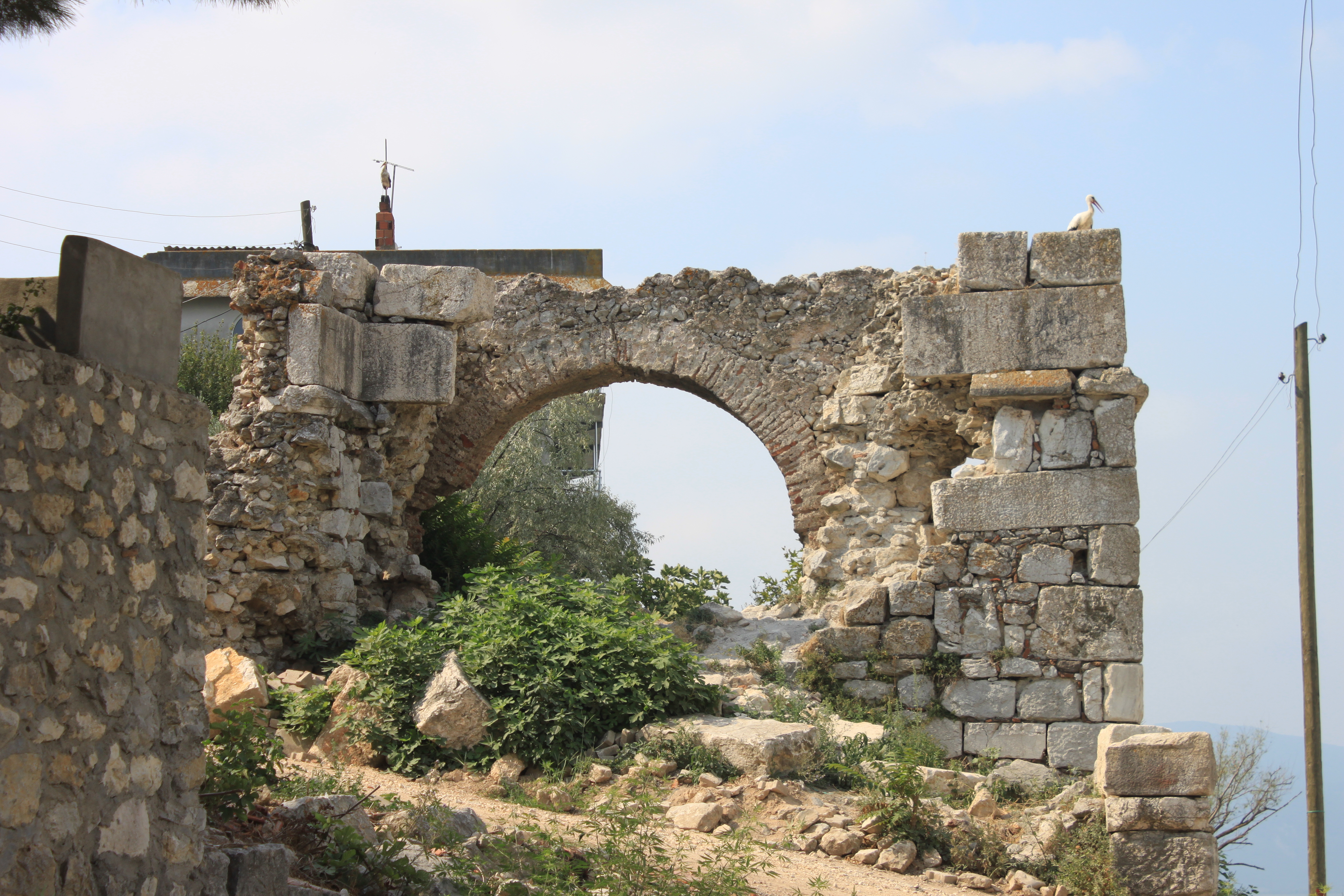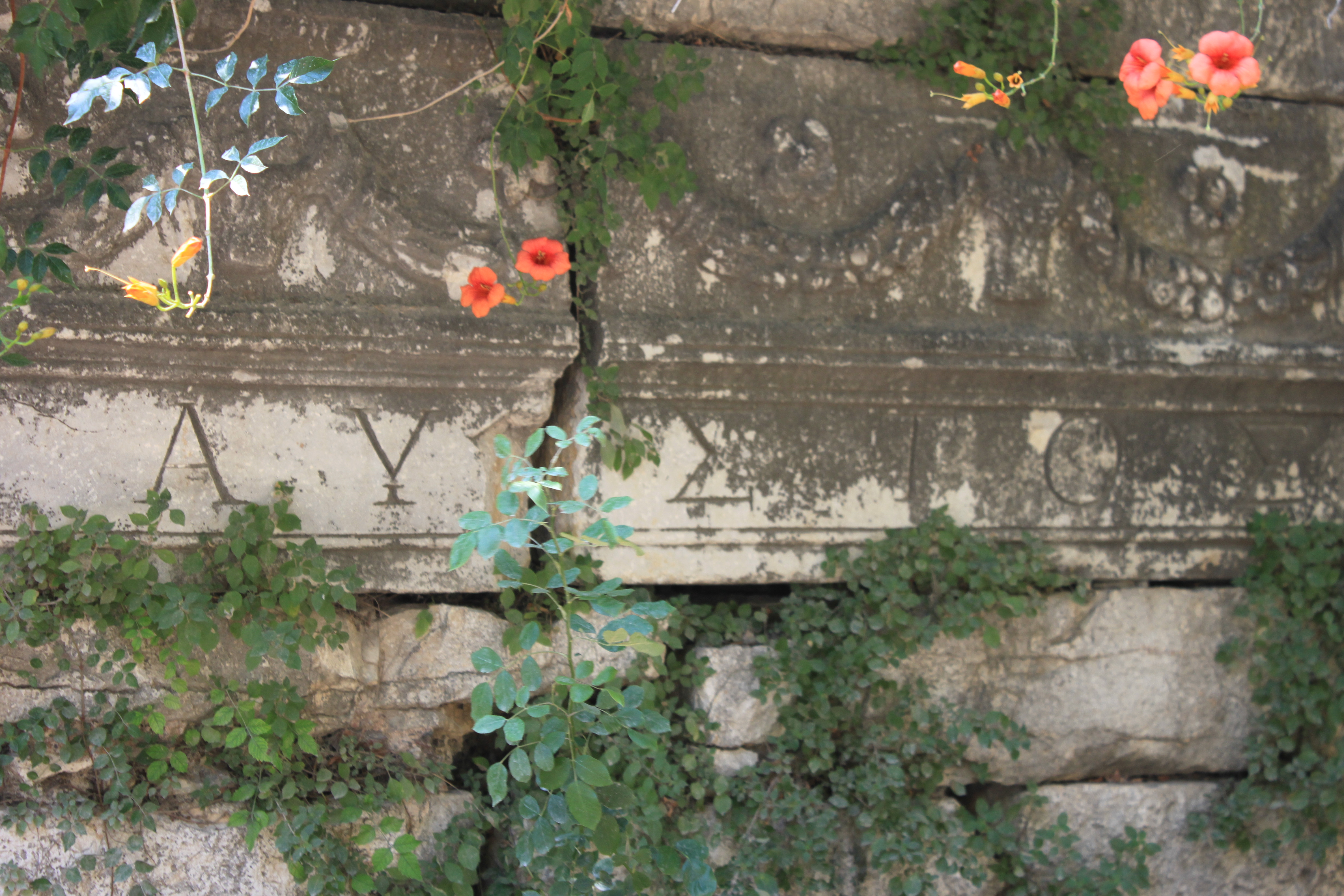Apollonia ad Rhyndacum on:
[Wikipedia]
[Google]
[Amazon]
Apollonia or Apollonia-on-the-Rhyndacus ( grc, Ἀπολλωνία ἐπὶ Ῥυνδακῷ, ''Apollōnía épì Ryndakō''; la, Apollonia ad Rhyndacum) was an ancient town opposite the delta of the Rhyndacus river in northwestern

 It is thought that the neighbouring islet known today as Kız Ada was a sacred area of Apollo during antiquity. After the construction of the temple in the name of preservative God of the city, head of Apollo, kithara, plectron and Apollo Sauroctonus figure in the temple were used from Hellenistic Era to the late Roman Empire Period. Usage of crawfish figure continued its prevalence while depiction of Gorgon head gradually decreased. Coins minted in the town display various deities, next to the eponymous Apollo other deities such as
It is thought that the neighbouring islet known today as Kız Ada was a sacred area of Apollo during antiquity. After the construction of the temple in the name of preservative God of the city, head of Apollo, kithara, plectron and Apollo Sauroctonus figure in the temple were used from Hellenistic Era to the late Roman Empire Period. Usage of crawfish figure continued its prevalence while depiction of Gorgon head gradually decreased. Coins minted in the town display various deities, next to the eponymous Apollo other deities such as 
Anatolia
Anatolia, tr, Anadolu Yarımadası), and the Anatolian plateau, also known as Asia Minor, is a large peninsula in Western Asia and the westernmost protrusion of the Asian continent. It constitutes the major part of modern-day Turkey. The ...
and corresponds today to the town of Gölyazı.
Location
Nine cities known as Apollonia were build during antiquity in Anatolia. Strabo placed Apollonia-on-the-Rhyndacus inMysia
Mysia (UK , US or ; el, Μυσία; lat, Mysia; tr, Misya) was a region in the northwest of ancient Asia Minor (Anatolia, Asian part of modern Turkey). It was located on the south coast of the Sea of Marmara. It was bounded by Bithynia on th ...
, causing some to misidentify Uluabat as Apollonia on the western shore of Lake Uluabat
Lake Uluabat ( tr, Uluabat Gölü and ) is the name of a freshwater lake in the vicinity of Bursa, Turkey. It is a large lake, covering an area of between 135 and 160 km2 depending on the water level, but very shallow, being only 3 m deep a ...
. However, the site is actually the promontory tombolo
A tombolo is a sandy or shingle isthmus. A tombolo, from the Italian ', meaning 'pillow' or 'cushion', and sometimes translated incorrectly as ''ayre'' (an ayre is a shingle beach of any kind), is a deposition landform by which an island becom ...
on the northeastern shore, near modern Gölyazı. Lake Uluabat extends from east to west and is studded with several islands and peninsulas, on one of which the city of Apollonia was built. The name of “Apollonia ad Rhyndacum” was likely chosen in order to differentiate from the other cities in the antiquity with reference to the stream “Rhyndacus (Adranos)” located close to the city and stemming from Aizanoi (Çavdarhisar
Çavdarhisar is a town and district of Kütahya Province in the Aegean region of Turkey. According to 2000 census, population of the district is 13,538 of which 4,687 live in the town of Çavdarhisar. The local Kocaçay stream is still crossed by ...
).

History
Apollonia ad Rhyndacum is one of many ancient Greek cities that bear the name ofApollo
Apollo, grc, Ἀπόλλωνος, Apóllōnos, label=genitive , ; , grc-dor, Ἀπέλλων, Apéllōn, ; grc, Ἀπείλων, Apeílōn, label= Arcadocypriot Greek, ; grc-aeo, Ἄπλουν, Áploun, la, Apollō, la, Apollinis, label ...
. Inhabitants of Apollonia believed that their original colony had been founded by Miletus under the auspices of Apollo
Apollo, grc, Ἀπόλλωνος, Apóllōnos, label=genitive , ; , grc-dor, Ἀπέλλων, Apéllōn, ; grc, Ἀπείλων, Apeílōn, label= Arcadocypriot Greek, ; grc-aeo, Ἄπλουν, Áploun, la, Apollō, la, Apollinis, label ...
of Didyma, so Apollo
Apollo, grc, Ἀπόλλωνος, Apóllōnos, label=genitive , ; , grc-dor, Ἀπέλλων, Apéllōn, ; grc, Ἀπείλων, Apeílōn, label= Arcadocypriot Greek, ; grc-aeo, Ἄπλουν, Áploun, la, Apollō, la, Apollinis, label ...
was its archegetes. The city experienced prosperity under the Attalids
The Kingdom of Pergamon or Attalid kingdom was a Greek state during the Hellenistic period that ruled much of the Western part of Asia Minor from its capital city of Pergamon. It was ruled by the Attalid dynasty (; grc-x-koine, Δυναστ ...
during Hellenistic times. It is thought that the neighbouring islet known today as Kız Ada was a sacred area of Apollo during antiquity. After the construction of the temple in the name of preservative God of the city, head of Apollo, kithara, plectron and Apollo Sauroctonus figure in the temple were used from Hellenistic Era to the late Roman Empire Period. Usage of crawfish figure continued its prevalence while depiction of Gorgon head gradually decreased. Coins minted in the town display various deities, next to the eponymous Apollo other deities such as
It is thought that the neighbouring islet known today as Kız Ada was a sacred area of Apollo during antiquity. After the construction of the temple in the name of preservative God of the city, head of Apollo, kithara, plectron and Apollo Sauroctonus figure in the temple were used from Hellenistic Era to the late Roman Empire Period. Usage of crawfish figure continued its prevalence while depiction of Gorgon head gradually decreased. Coins minted in the town display various deities, next to the eponymous Apollo other deities such as Zeus
Zeus or , , ; grc, Δῐός, ''Diós'', label= genitive Boeotian Aeolic and Laconian grc-dor, Δεύς, Deús ; grc, Δέος, ''Déos'', label= genitive el, Δίας, ''Días'' () is the sky and thunder god in ancient Greek reli ...
or Demeter during the Hellenistic period
In Classical antiquity, the Hellenistic period covers the time in Mediterranean history after Classical Greece, between the death of Alexander the Great in 323 BC and the emergence of the Roman Empire, as signified by the Battle of Actium in ...
and Artemis
In ancient Greek mythology and religion, Artemis (; grc-gre, Ἄρτεμις) is the goddess of the hunt, the wilderness, wild animals, nature, vegetation, childbirth, care of children, and chastity. She was heavily identified wit ...
during later Roman times. A necropolis outside the town contains graves from the Hellenistic to the Byzantine period.
The city became later part of the Byzantine Empire
The Byzantine Empire, also referred to as the Eastern Roman Empire or Byzantium, was the continuation of the Roman Empire primarily in its eastern provinces during Late Antiquity and the Middle Ages, when its capital city was Constantinopl ...
and was a suffragan bishopric under the jurisdiction of the metropolitan of Nicomedia
Nicomedia (; el, Νικομήδεια, ''Nikomedeia''; modern İzmit) was an ancient Greek city located in what is now Turkey. In 286, Nicomedia became the eastern and most senior capital city of the Roman Empire (chosen by the emperor Diocleti ...
. After the Turkmen invasion of Anatolia in the 1070s, a Turkmen warlord named Elchanes took control of Apollonia and of nearby Kyzikos
Cyzicus (; grc, Κύζικος ''Kúzikos''; ota, آیدینجق, ''Aydıncıḳ'') was an ancient Greek town in Mysia in Anatolia in the current Balıkesir Province of Turkey. It was located on the shoreward side of the present Kapıdağ Peni ...
around the year 1084. The Byzantine Emperor Alexios I Komnenos
Alexios I Komnenos ( grc-gre, Ἀλέξιος Κομνηνός, 1057 – 15 August 1118; Latinized Alexius I Comnenus) was Byzantine emperor from 1081 to 1118. Although he was not the first emperor of the Komnenian dynasty, it was during ...
sent twice expeditions against Elchanes and the second expedition under Constantinos Opos was successful in persuading the warlord by generous payments to give up his holdings.
The town came under Ottoman control in 1342. After the fall of the Ottoman Empire, the town was renamed to Gölyazı in the new republic.

See also
* List of ancient Greek citiesReferences
Aybek S. and Öz A. K. “Preliminary Report of the Archeological Survey at Apollonia Ad Rhyndacum”, Anatolia 27, 1-25, 2004. Aybek S. and Öz. A. K. “The Apollo Sanctuary of Apollonia ad Rhyndacum”, Ist International Symposium on the Oracle in Antiquity and the Cults of Apollo in Asia Minor, Ege University, Izmir, 2005. Abmeier A. “Zur Geschichte von Apollonia am Rhyndakos", E. Schwertheim (ed.), Mysische Studien. AMStud 1, 1990.Notes
{{DEFAULTSORT:Apollonia Ad Rhyndacum Ancient Greek archaeological sites in Turkey Greek colonies in Mysia Former populated places in Turkey Byzantine fortifications in Turkey Milesian colonies History of Bursa Province Populated places in ancient Mysia Populated places of the Byzantine Empire